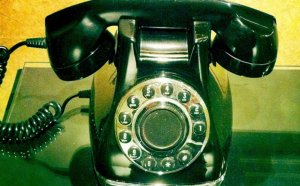
History of Smoke Alarms
In 1915, people living in homes or apartments could expect that if their home caught fire, they’d have a one in ten chance of that fire killing them.
One hundred years later, the statistic has dropped to a one in one hundred chance of dying from fire in your home or apartment. The key change agent in those statistics is without a doubt the invention of the practical, inexpensive home smoke alarm.
Smoke detectors have been around since the late 1890s. George Andrew Darby patented the first heat and smoke detector in 1902 in Birmingham, England. Twenty years later, Swiss physicist Walter Jaeger was working to invent a sensor for poison gas, but was failing. Sitting at his desk, he lit a cigarette and was startled to notice his “poison” device was responding to the smoke emitting from his coffin nail. His work translated into the road map for modern smoke detectors.
In 1939, another Swiss physicist Dr. Ernst Meli developed a device with an ionisation chamber that could detect gasses in underground mines. He also invented a cold-cathod tube that could amplify the small electronic signal created by the detection mechanism to a strength sufficient to trigger an alarm. The result was the ionisation smoke alarm.
The first ionisation smoke detectors were extremely expensive. First introduced into the U.S. market in 1951, their use was limited to commercial and industrial facilities. There were various attempts at creating more practical devices, but as of 1963, were quite limited and did not have much public exposure.
Duane Pearsall is considered the “father of smoke detectors.” He and collaborator Stanley Bennett Peterson developed the first practical home smoke detector. It was called the “SmokeGard 700.” Made of fire resistant steel, it was shaped like a bee hive. The key to the SmokeGard 700 was the removable and replaceable battery that made its operation cost effective. Early studies in the 1960s demonstrated that smoke detectors responded to fire faster than heat detectors.
Stanley Peterson, who as an employee at Pearsall’s company, Statitrol Corporation, contributed to the evolution of smoke detectors by developing a widely copied plan for mass distribution. Even with these breakthroughs, the cost of individual alarms was still high, often reaching into the $200 + per unit range.
In 1969, BRK Electronics (who would later launch the First Alert® brand ) designed the first battery-operated smoke alarm to receive a UL (Underwriters Laboratories Inc.) Listing.
By 1972, ionisation detectors were available with power coming from a standard 9-volt battery. The cost had dropped to just over $100 per unit, and they sold at a rate of approximately 200, 000 units per year. In 1974, Sears, Roebuck and Company put its name on BRK brand battery-operated smoke alarms. It was during this time that major technology advances were made, and by 1975, the word was out: smoke detectors were saving lives in house fires.
VIDEO REVIEWS



Share this Post
Related posts
History of Smoke Signals
It s a very human characteristic to communicate through the use of gestures and signs. The plains tribes, including the Arapaho…
Read MoreHistory of Smoke Detectors
What is a Smoke Detector? A smoke detector is a device that detects the presence of smoke in a building and warns the occupants…
Read More










